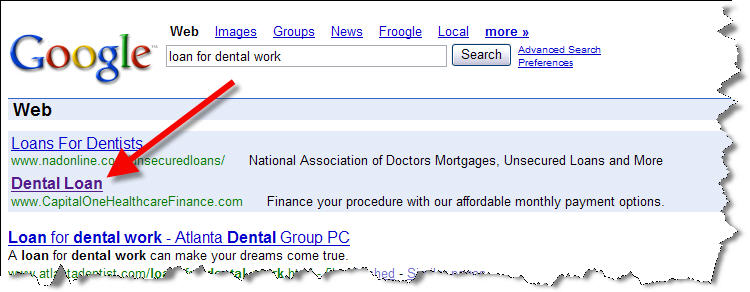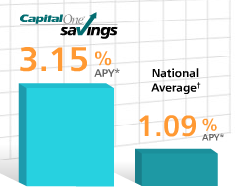 Tired of competing with 1.9% dealer financing? Fight back with online car buying services. Many financial institutions, especially credit unions, have offered car-buying services online. With 67% of new car buyers researching online last year according to JD Powers, there's ample opportunity to get in front of car buyers BEFORE they arrive at the dealership. However, for the most part, major banks have stayed away from this area, in part so as not to annoy their dealer-financed customers.
Tired of competing with 1.9% dealer financing? Fight back with online car buying services. Many financial institutions, especially credit unions, have offered car-buying services online. With 67% of new car buyers researching online last year according to JD Powers, there's ample opportunity to get in front of car buyers BEFORE they arrive at the dealership. However, for the most part, major banks have stayed away from this area, in part so as not to annoy their dealer-financed customers.
 That may change as one big player, Capital One, enters the business, albeit with fewer channel-conflict issues. The credit card giant is already a big player in online auto finance and generated 1.5 million auto loan applications across its 44 million customer base last year alone. It recently launched its new DriveOne <driveone.com> service in several markets (click on inset for closeup).
That may change as one big player, Capital One, enters the business, albeit with fewer channel-conflict issues. The credit card giant is already a big player in online auto finance and generated 1.5 million auto loan applications across its 44 million customer base last year alone. It recently launched its new DriveOne <driveone.com> service in several markets (click on inset for closeup).
 DriveOne is a slick car-quote service that rivals anything we've seen online. The design is state-of-the-art, easy to navigate, and, with no advertisements, it's much faster than others. The site, powered by Zag <zag.com>, features branded data from Kelly Blue Book <kbb.com>. Furthermore, it's closely tied to the lender, with a slide-bar payment calculator built in to the main user interface (see right-side of screenshot left).
DriveOne is a slick car-quote service that rivals anything we've seen online. The design is state-of-the-art, easy to navigate, and, with no advertisements, it's much faster than others. The site, powered by Zag <zag.com>, features branded data from Kelly Blue Book <kbb.com>. Furthermore, it's closely tied to the lender, with a slide-bar payment calculator built in to the main user interface (see right-side of screenshot left).
DriveOne will connect buyers to dealers who must agree to sell vehicles at a fixed price no higher than Kelley New Car Blue Book Value. However, dealers are still free to negotiate add-ons, such as security systems or additional warranties. In addition to the fixed prices, buyers receive a $250 (new cars) or $400 (used car) rebate direct from DriveOne, no matter how they finance the purchase. Dealers indirectly fund this rebate with the fee paid to Zag whenever they sell a car through the program.
Powered by Zag
 The DriveOne platform comes from Zag, a car-buying service launched early last year by Scott Painter, the founder of CarsDirect.com and BuildToOrder.com. The company used seed money from Elon Musk, founder of X.com/PayPal. One of Zag's investors is Capital One, which led the third round in Dec. 2005.
The DriveOne platform comes from Zag, a car-buying service launched early last year by Scott Painter, the founder of CarsDirect.com and BuildToOrder.com. The company used seed money from Elon Musk, founder of X.com/PayPal. One of Zag's investors is Capital One, which led the third round in Dec. 2005.
In Nov. 2005, the company acquired Autoland, the leading auto-buying service bureau for credit unions, with 300 clients serving a total of 8 million members, primarily on the West Coast. Total annual vehicle sales are more than $270 million. The company says it will have approximately 50 of the 300 credit unions using the DriveOne platform by year-end.
Last month, Zag acquired Automotive Invitational Services that serves 6 million members across a dozen AAA clubs. Zag says it will be offering DriveOne in seven states by the end of this month and will be working with 3,000 dealers by year-end.
—JB
 The current reader poll on American Banker's homepage (here) is seeking opinions on Capital One's new "decoupled" debit card. It's a new MasterCard debit card that can be attached to any checking account by processing transactions through the open ACH system. Cards can be used in PIN or signature mode. Capital One began issuing the new product to credit card customers in March and has signed a co-brand deal with an unknown grocery chain.
The current reader poll on American Banker's homepage (here) is seeking opinions on Capital One's new "decoupled" debit card. It's a new MasterCard debit card that can be attached to any checking account by processing transactions through the open ACH system. Cards can be used in PIN or signature mode. Capital One began issuing the new product to credit card customers in March and has signed a co-brand deal with an unknown grocery chain. 








